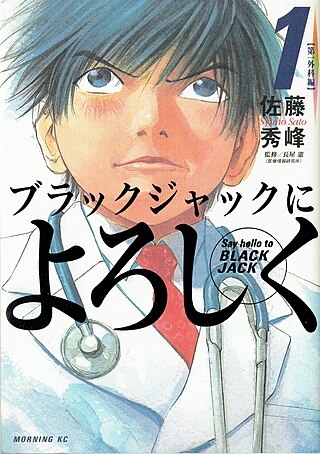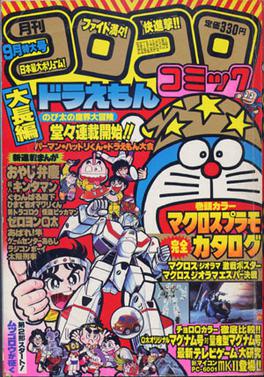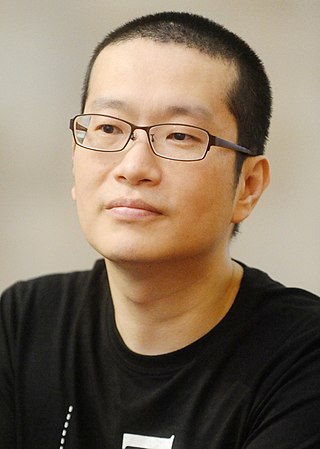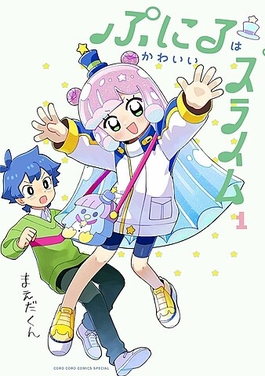Shōnen manga is an editorial category of Japanese comics targeting an audience of adolescent boys. It is, along with shōjo manga, seinen manga, and josei manga, one of the primary editorial categories of manga. Shōnen manga is traditionally published in dedicated manga magazines that exclusively target the shōnen demographic group.

Seinen manga (青年漫画) is an editorial category of Japanese comics marketed toward young adult men. In Japanese, the word seinen means "youth", but the term "seinen manga" is also used to describe the target audience of magazines like Weekly Manga Times and Weekly Manga Goraku, which write on topics of interest to male university students and workingmen. Seinen manga is distinguished from shōnen manga, which is for young boys, and seijin-muke manga (成人向け漫画), which are intended for adult audiences and often contain explicit content. Some seinen manga like xxxHolic share similarities with shōnen manga. Seinen manga can focus on action, politics, science fiction, fantasy, relationships, sports, or comedy. The female equivalent to seinen manga is josei manga.

Shogakukan Inc. is a Japanese publisher of comics, magazines, light novels, dictionaries, literature, non-fiction, home media, and other media in Japan.
Hiromu Arakawa is a Japanese manga artist. She is best known for the manga series Fullmetal Alchemist (2001–2010), which became a hit both domestically and internationally, and was adapted into two anime television series. She is also known for Silver Spoon (2011–2019) and the manga adaptation of The Heroic Legend of Arslan novels.

Tetsuya Chiba is a Japanese manga artist. Considered a major figure in the history of manga, many of his early titles are still in print due to continued popularity.

CoroCoro Comic is a Japanese monthly manga magazine published by Shogakukan; established on May 15, 1977. Its main target is elementary school-aged boys. Several of its properties, like Doraemon and the Pokémon series of games, have gone on to be cultural phenomena in Japan.
The Shogakukan Manga Award is one of Japan's major manga awards, and is sponsored by Shogakukan Publishing. It has been awarded annually for serialized manga and features candidates from a number of publishers. It is the oldest manga award in Japan, being given since 1955.

Kazuhiro Fujita is a Japanese manga artist. He graduated from Nihon University. He made his professional manga debut in Weekly Shōnen Sunday in 1989. He is known for his manga series Ushio & Tora and Karakuri Circus. For Ushio & Tora, Fujita won the Shogakukan Manga Award in the shōnen category in 1992 and the Seiun Award in 1997.

Comic BomBom was a monthly Japanese children's manga magazine published by Kodansha and aimed at elementary school boys. It was first published on October 15, 1981, and ceased publication in 2007. A web version of the magazine has been published on Pixiv Comic since the end of July 2017.

Dororon Enma-kun (ドロロンえん魔くん), also known as Satanikus!, is a Japanese horror-comedy anime and manga series created by Go Nagai. It is one of Nagai's most famous works in Japan, although not very well known in the rest of the world. In 2006, it would get a sequel/remake in Demon Prince Enma, which drops the comedy and becomes a full-fledged suspense-horror series. After the OVA was released, another manga version was released called Satanikus Enma Kerberos by Eiji Toriyama. A remake entitled Ghastly Prince Enma Burning Up aired in Japan in 2011.

Ace of Diamond is a Japanese baseball-themed manga series written and illustrated by Yuji Terajima. It was serialized in Kodansha's shōnen manga magazine Weekly Shōnen Magazine from May 2006 to January 2015, with its chapters collected in 47 tankōbon volumes. A sequel titled Ace of Diamond Act II was serialized from August 2015 to October 2022, with its chapters collected in 34 tankōbon volumes.
Keshikasu-kun is a Japanese children's manga written and illustrated by Noriyuki Murase. It has been serialized in Monthly CoroCoro Comic from June 2004.

Children of the Sea is a Japanese manga series written and illustrated by Daisuke Igarashi. It was serialized in Shōgakukan's seinen manga magazine Monthly Ikki from December 2005 to September 2011. Shōgakukan has collected the series into five tankōbon volumes published between July 2007 and July 2012. The manga is licensed in North America by Viz Media, who serialized it online at SigIkki.com and released the five tankōbon volumes from July 2009 to June 2013.

Mu-jik Park, known professionally as Boichi, is a South Korean manhwa-turned-manga artist living in Japan.

Kodansha Ltd. is a Japanese privately held publishing company headquartered in Bunkyō, Tokyo. Kodansha publishes the manga magazines Nakayoshi, Afternoon, Evening, Weekly Shōnen Magazine, and Bessatsu Shōnen Magazine, as well as the more literary magazines Gunzō, Shūkan Gendai, and the Japanese dictionary, Nihongo Daijiten. Kodansha was founded by Seiji Noma in 1910, and members of his family continue as its owners either directly or through the Noma Cultural Foundation.

Plamo-Kyoshiro is a manga series created and written by Hisashi Yasui and illustrated by Koichi Yamato. Part of Sunrise's Gundam Franchise, it was first serialized in Kodansha's Shōnen magazine Comic BomBom from August 20, 1982 until December 17, 1986, compiling up to 15 tankobon volumes.

Duel Masters Rev. is a Japanese manga series written by Shido Kanzaki and illustrated by Shinsuke Takahashi. It is a spin-off of the media franchise Duel Masters. It was serialized in Shogakukan's Weekly Shōnen Sunday from August 2012 to July 2013, with its chapters collected in five tankōbon volumes.

Puniru Is a Cute Slime is a Japanese manga series written and illustrated by Maeda-kun. Preceded by a one-shot published in Shogakukan's children's manga magazine Bessatsu CoroCoro Comic in February 2019, the manga started its serialization in Weekly CoroCoro Comic online service in March 2022. Shogakukan has collected its chapters in six tankōbon volumes as of October 2024. The series focuses on the titular character Puniru, a slime girl created by a boy named Kotaro Kawaii during his childhood and wants him to notice her for her cuteness despite him being in love with his junior high school senior. An anime television series adaptation produced by Toho Animation Studio premiered in October 2024.














